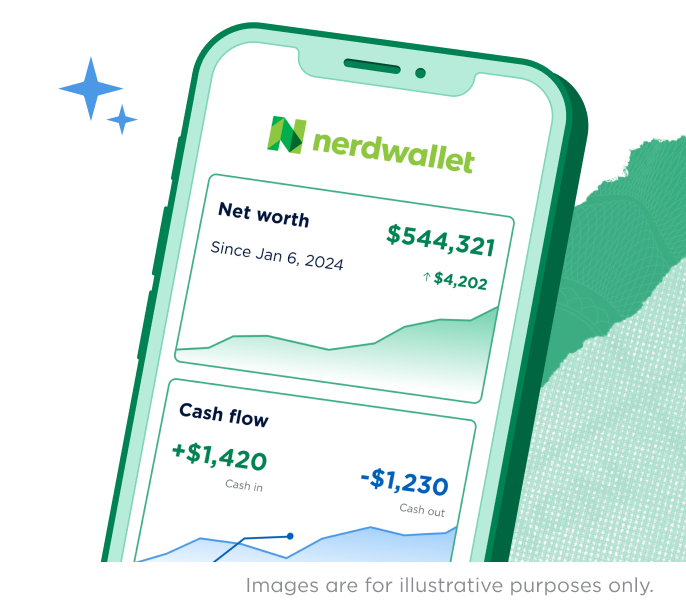How Much Should I Spend on Rent?
What you can afford depends on income, living expenses and other bills like student loan payments.

Many, or all, of the products featured on this page are from our advertising partners who compensate us when you take certain actions on our website or click to take an action on their website. However, this does not influence our evaluations. Our opinions are our own. Here is a list of our partners and here's how we make money.
How much should you spend on rent? Before you start searching online for rental options, determine how much you can truly afford to pay. Here are a few ways to figure that out.
How much should you spend on rent?
One popular guideline is the 30% rent rule, which says to spend around 30% of your gross income on rent. So if you earn $4,000 per month before taxes, you could spend up to about $1,200 per month on rent.
This is a solid guideline, but it’s not one-size-fits-all advice.
If you live in an affordable area, for example, don't pass up a good deal on rent simply because it’s only 18% of your income. On the flip side, sticking to spending 30% on rent isn’t always feasible in a place like New York City or San Francisco, where median rents are over $2,000 for a one-bedroom apartment, according to December 2024 data from Apartment List, a rental search service.
Work out how much of your income should go to rent with the 50/30/20 rule
The 30% guideline is one way to look at rent as part of your income. You can also use the 50/30/20 budget as a guide to figure out how much you can afford to spend on rent. This method allocates your take-home pay (after taxes) to 50% for needs, 30% for wants and 20% for savings and additional debt payments.
So if you earn $4,000 per month after taxes, you’d divvy your paycheck up like so:
$2,000 for needs such as rent, utilities, groceries, insurance and minimum debt payments.
$1,200 for wants such as shopping and concerts.
$800 for savings and additional debt payments.
Take control of your finances with the NerdWallet app
Our app tracks your spending, credit score, net worth and more — so you have a clear view of your day-to-day and long-term finances.

How much rent can I afford?
Let’s stick with the 50/30/20 breakdown and our $4,000 per month income example. You’re aiming to keep the cost of all your needs below $2,000, which could make your rent budget pretty tight.
Consider this example:
$400 monthly student loan payment.
$360 monthly car payment.
$135 monthly car insurance.
$225 monthly grocery tab.
Those expenses total $1,120 per month, leaving just $880 per month for rent and utilities. Unless you’re planning to split rent payments with someone else, that probably won’t be enough. The average apartment rent nationwide is $1,748, according to listing service RentCafe, based on November 2024 data covering 124 U.S. markets .
» SEE THE DATA: U.S. rental market trends
Budgets exist as guidelines rather than hard rules, so the reality may be that rent and other needs will add up to more than 50% of your income. In these situations, in particular, it might make sense to exceed your rent budget:
You’re in an unstable living situation. It may sometimes be necessary to spend more in rent (if you have the means) or to opt for a so-so rental if your current living situation is unsafe or otherwise unstable.
You have to move for work. You may need to spend more on rent if you have to relocate to be closer to work, or if you’re moving somewhere new for a change of pace that will help improve your quality of life.
The 60/30/10 budget, which allocates 60% of your after-tax income to needs, may be a better fit if that 50% target doesn’t seem like enough.

Factor other rent-related costs into your budget
Where you live affects things as varied as your commute and your workout routine. Factor in additional costs (or savings) you might incur depending on your rental choice.
Living farther from the city center, for example, is often less expensive. But you could spend hundreds each month on transportation costs to commute to and from work and social engagements.
Some rentals include utilities such as gas and water, have an on-site gym or a washer and dryer in-unit. Factor in those perks when comparing the cost of rentals. An on-site gym, for example, could save you $100 per month or more on a gym membership. And in-unit laundry equals savings on time and money versus coin laundry or trips to the laundromat.
» CALCULATE: Should you rent or buy?
Look for savings
Try not to neglect your savings in order to spend more on rent. Future you will thank you for making your emergency fund and retirement savings a priority. But in critical times, tactics such as dipping into an emergency fund or applying for rental assistance programs may be necessary to help you pay rent when you can’t afford it.
If what you can afford doesn’t align with the rental market in your area, look for ways to cut costs elsewhere. It’s natural — and wise — to look at non-essential spending to free up space in your budget, but you can often find savings among necessary expenses, too.
Negotiate your bills: Heat, water and electricity are needs, but premium cable, for example, falls squarely in the “wants” category. Try negotiating with your service providers to get a better deal on things like internet, cable and your cell phone plan. (This script may help you cut your cell phone bill.)
Spend less on groceries: Get in the habit of using coupons and planning your meals to maximize your grocery budget.
Get a roommate: Living solo means shouldering the burden of rent and utilities on your own. Instead, find a roommate and split the cost of renting a two-bedroom or even a house. Need a more affordable option? Consider renting a room in a collective house.
Look for move-in deals: Sometimes landlords or rental agencies offer special promotions to entice new potential tenants. You may be able to get a discount on the first month’s rent or bypass some of the deposit requirements. You may also be able to negotiate a better rent price if you offer to sign a longer lease.
Shop around for car Insurance: Look for ways to save on car insurance, including getting a car that’s cheap to insure. If you’re a good driver, many carriers offer safe driver discounts to help you save even more.
» Ready to get started? Compare car insurance rates to find the best deal.


